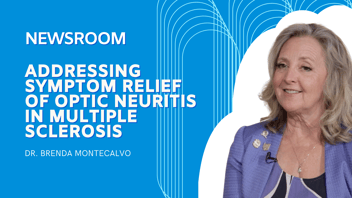Dr. Vivek Labhishetty answers your most frequently asked questions.
What is the difference between a symptomatic and an asymptomatic Convergence Insufficiency?
When viewing an object in a natural scene, our eyes work together with both our focusing (accommodation) and aligning (vergence) systems acting in unison. Any abnormalities in one or both the systems lead to binocular vision (accommodation or vergence) disorders and could cause symptoms such as headache and eye strain. One of the widely accepted explanations on the potential association between vergence disorders and the symptomology is the ability of an individual’s ‘fusional vergence’ system to compensate. Clinicians typically tend to use the term ‘fusional vergence limits’ to define fusional vergence reserves present in their patient.
Typical measurement of fusional vergence limit involves introduction of prisms while the patient fixates at an object. The limit is defined by the amount of prism needed for the patient to perceive double vision. Based on the previous clinical evidence, individuals with larger fusional vergence reserves tend to have a better ability to compensate for vergence disorders. Patients with limited fusional reserves tend to become symptomatic and do not feel comfortable with a simple refractive correction. Typical recommendations by clinicians involve either a prism correction or vision therapy.
To learn more about Neurolens, please visit our website at https://www.neurolenses.com/.
.png)

.png?width=352&height=222&name=brfeaturedimage%20(9).png)
.png?width=352&height=222&name=brfeaturedimage%20(5).png)
.png?width=352&height=222&name=MicrosoftTeams-image%20(67).png)
